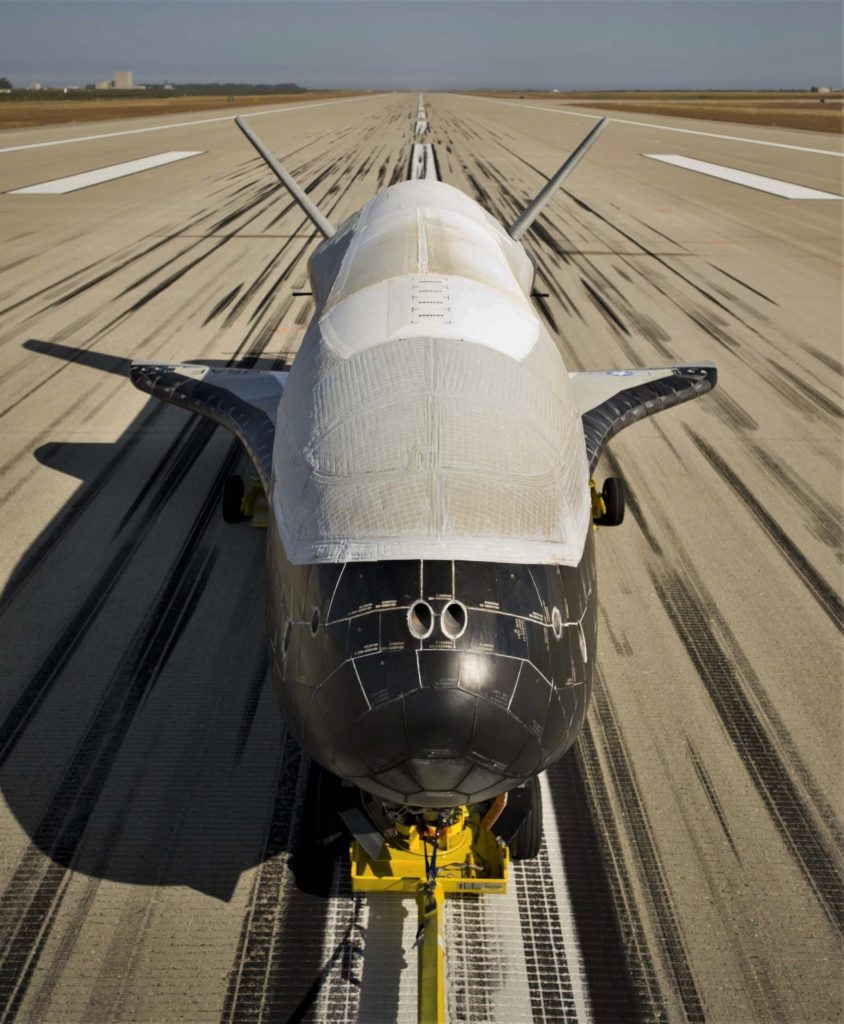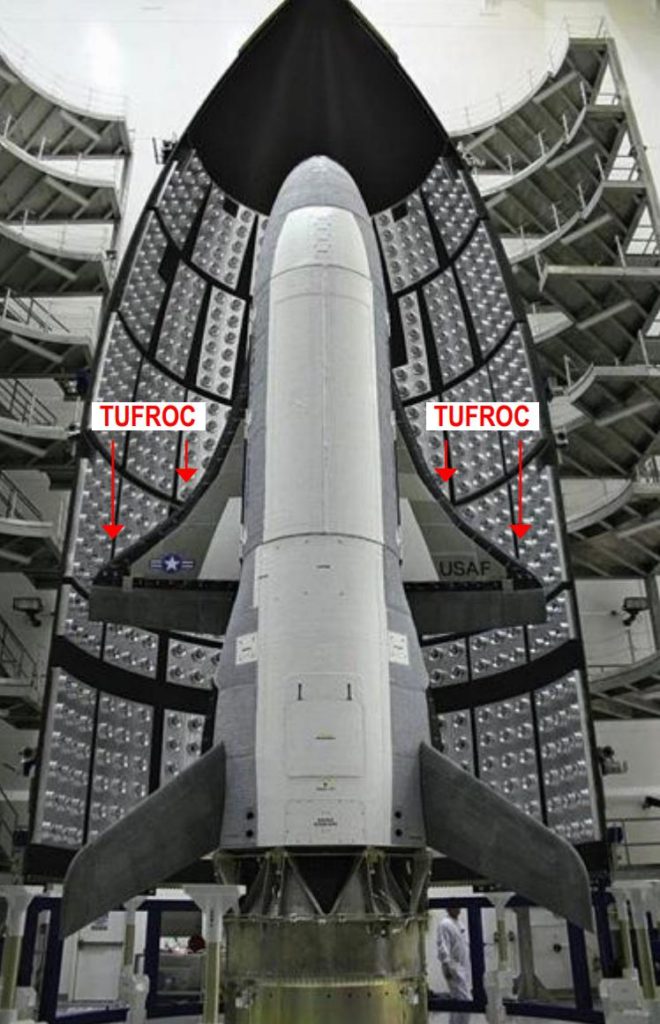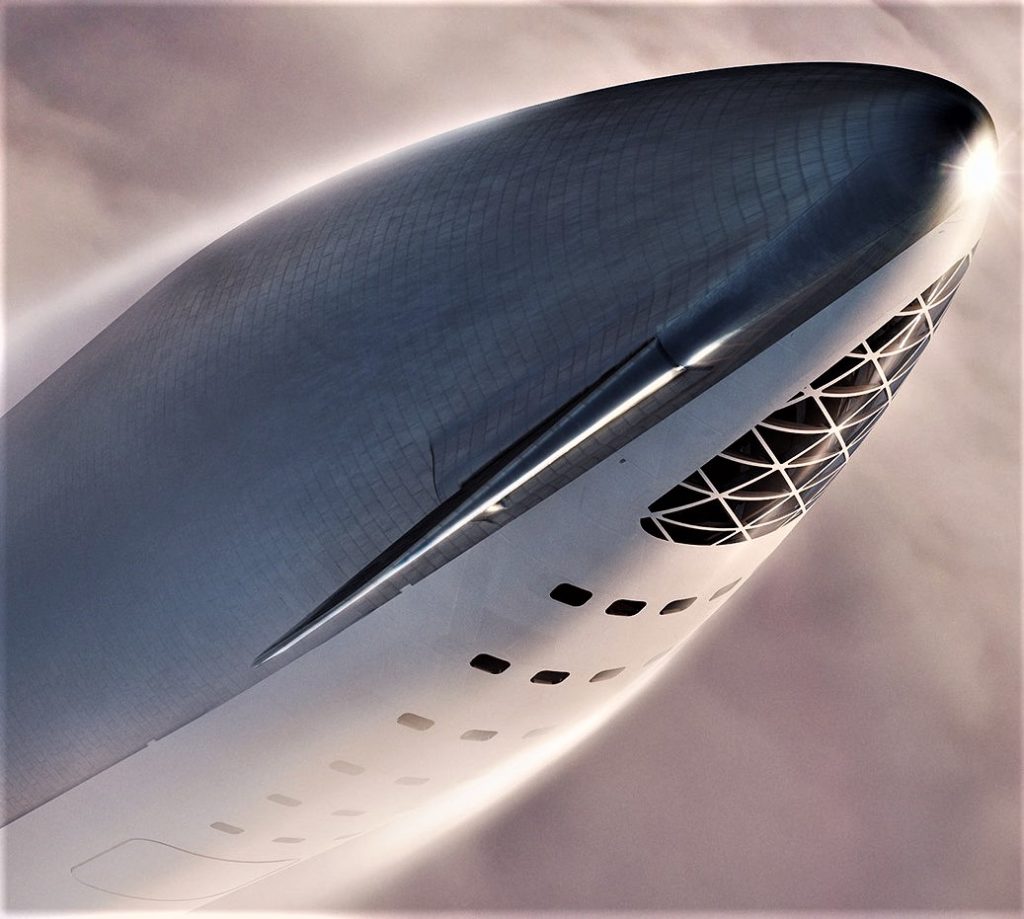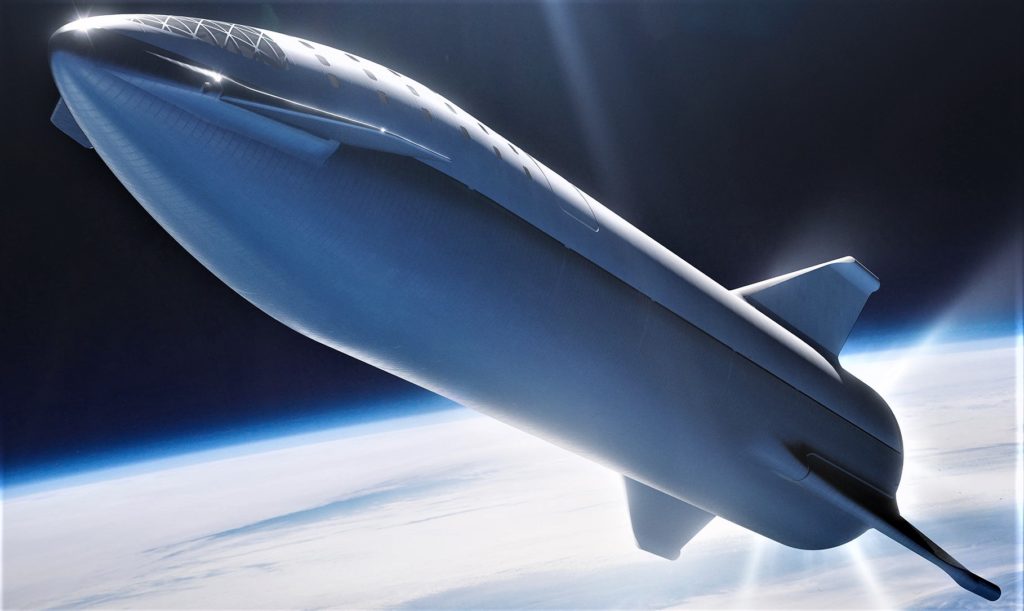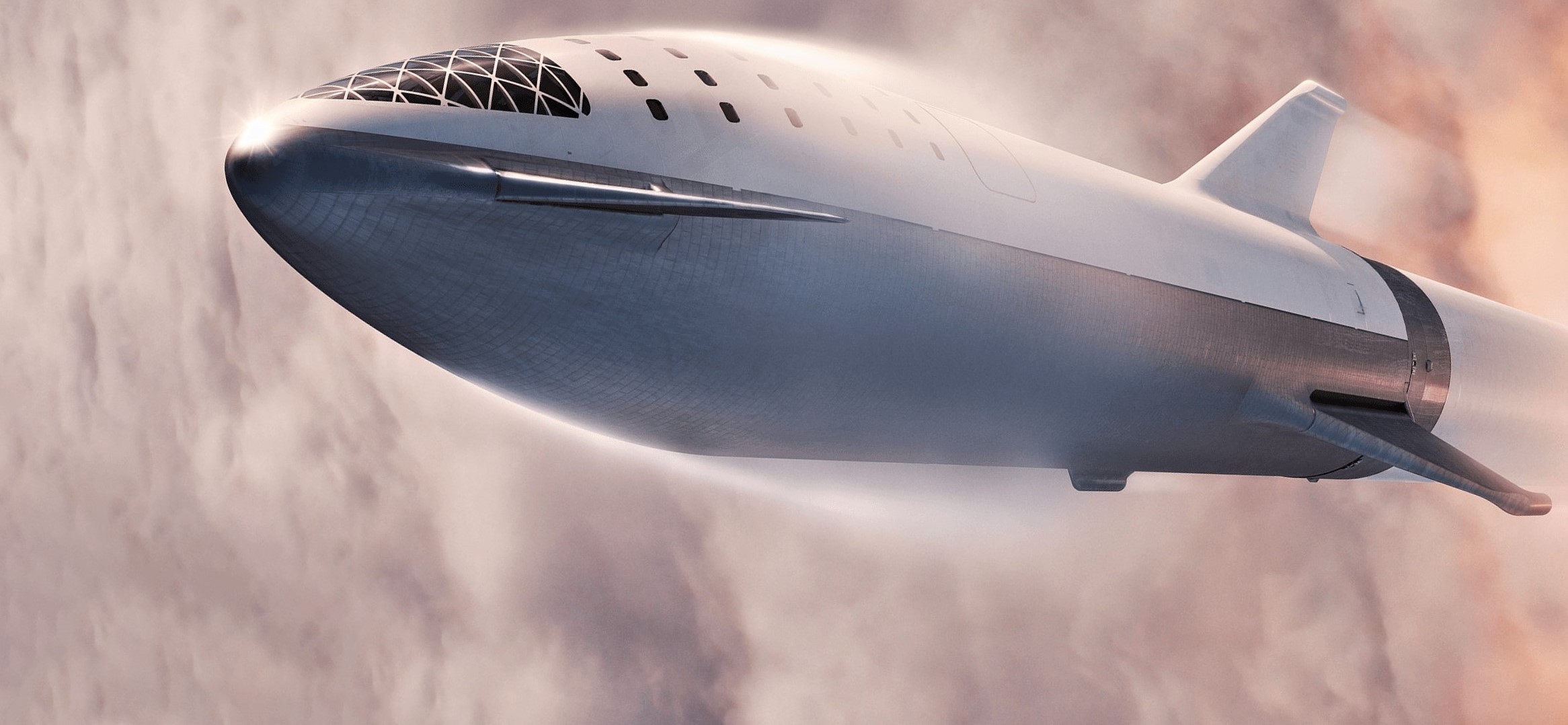
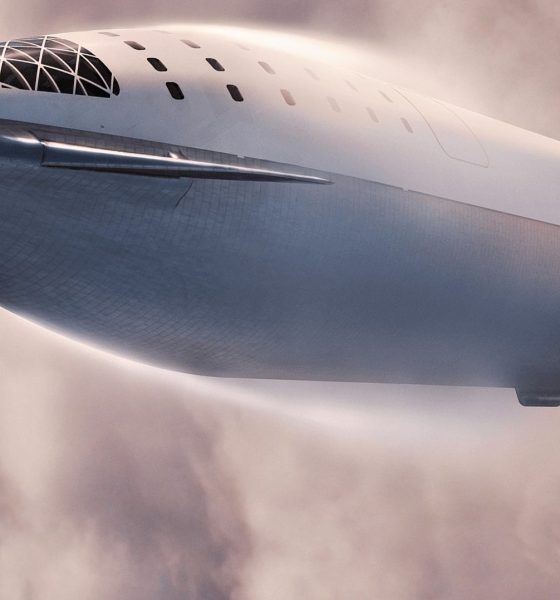
News
SpaceX’s BFR program pursuing advanced Starship heat shield with NASA help
According to a Space Act Agreement signed by SpaceX and NASA’s Ames Research Center in June 2018, the private company has begun working with NASA to acquire some basic experience and lessons-learned with a thermal protection (heat shield) material that is largely new to SpaceX.
Known as TUFROC (short for Toughened Uni-piece Fibrous Reinforced Oxidation-Resistant Composite), the NASA Ames-developed material is capable of withstanding temperatures as high as 1700 C (~3100 F) and is apparently an item of interest to SpaceX’s next-gen BFR (Starship/Super Heavy) rocket program, particularly Starship’s heat shield.
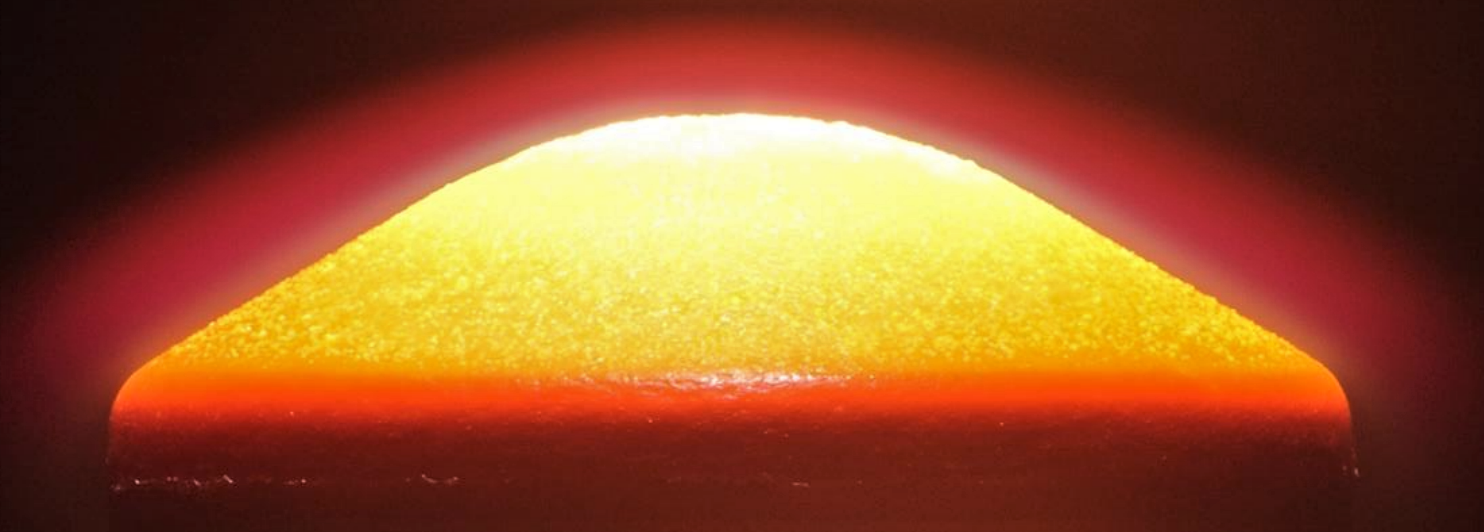
As far as the public is aware, SpaceX has never attempted to manufacture or utilize a heat shield technology like TUFROC. Falling under a domain of thermal protection materials known as ceramic matrix composites (CMCs), TUFROC is essentially an umbrella term that covers any thermal protection system that combines a carbon cap, silica base, and a cured glass coating to prevent oxidation. In recent years, Boeing’s secretive X-37B spaceplane has successfully demonstrated TUFROC reuse after orbital velocity reentries, confirming that the material is capable of surviving those conditions while experiencing minimal to no ablation.
Contour remains approx same, but fundamental materials change to airframe, tanks & heatshield
— Elon Musk (@elonmusk) November 25, 2018
Much like SpaceX borrowed the NASA-developed PICA (phenolic-impregnated carbon ablator) heat shield technology and dramatically improved it for cost-effective use on Cargo (and soon Crew) Dragon, the basic concept behind TUFROC’s heat shielding capabilities likely lends itself just as well to potential improvements in cost reduction, ease of manufacturing, mechanical strength, thermal protection characteristics, and more.
Unlike the fatally fragile carbon-carbon tiles used on the Space Shuttle, TUFROC’s namesake “Fibrous Reinforced” aspects also make it dramatically more resistant to impact related forces like those that led to the Columbia disaster, while still preserving the composite’s impressive heat resistance. NASA already categorizes TUFROC as a “low-cost” TPS, further indicating that SpaceX could quite easily cut the cost of production by a significant degree.
- Boeing’s X-37B spaceplane. (Boeing)
- A visualization of the location of X-37B’s limited TUFROC heat shielding. (NASA)
- A closeup of BFS’ nose section, featuring impressively varied tile-sizes, joining methods, and extremely precise curves on the interface between canard wings and the hull. (SpaceX)
- A view of BFS just after separating from its booster stage. (SpaceX)
What is not clear about this budding relationship is how exactly SpaceX foresees TUFROC or a custom heat shield derivative fitting into its BFR program. Currently, the TPS has only been demonstrated on X-37B as a literal edge-case, standing in for a more traditional silica tile on the leading edges of the small spacecraft’s wings, where reentry heating is often the most extreme. It’s possible that SpaceX is interested in TUFROC for the same reasons – using it to cover BFS/Starship’s forward and rear fins and nothing more.
However, it could be the case that SpaceX hopes an improved TUFROC-X might be viable as a monolithic one-size-fits-all heat shield material throughout BFR’s Super Heavy booster and Starship upper stage. Being forced to deal with a variety of different TPS materials inevitably raises the complexity and cost of a given spacecraft, so being able to significantly reduce the number of materials needed could be a boon for Starship.
NASA and SpaceX’s Space Act Agreement can be found here [PDF].
For prompt updates, on-the-ground perspectives, and unique glimpses of SpaceX’s rocket recovery fleet check out our brand new LaunchPad and LandingZone newsletters!

News
Tesla FSD fleet is nearing 7 billion total miles, including 2.5 billion city miles
As can be seen on Tesla’s official FSD webpage, vehicles equipped with the system have now navigated over 6.99 billion miles.

Tesla’s Full Self-Driving (Supervised) fleet is closing in on almost 7 billion total miles driven, as per data posted by the company on its official FSD webpage.
These figures hint at the massive scale of data fueling Tesla’s rapid FSD improvements, which have been quite notable as of late.
FSD mileage milestones
As can be seen on Tesla’s official FSD webpage, vehicles equipped with the system have now navigated over 6.99 billion miles. Tesla owner and avid FSD tester Whole Mars Catalog also shared a screenshot indicating that from the nearly 7 billion miles traveled by the FSD fleet, more than 2.5 billion miles were driven inside cities.
City miles are particularly valuable for complex urban scenarios like unprotected turns, pedestrian interactions, and traffic lights. This is also the difference-maker for FSD, as only complex solutions, such as Waymo’s self-driving taxis, operate similarly on inner-city streets. And even then, incidents such as the San Francisco blackouts have proven challenging for sensor-rich vehicles like Waymos.
Tesla’s data edge
Tesla has a number of advantages in the autonomous vehicle sector, one of which is the size of its fleet and the number of vehicles training FSD on real-world roads. Tesla’s nearly 7 billion FSD miles then allow the company to roll out updates that make its vehicles behave like they are being driven by experienced drivers, even if they are operating on their own.
So notable are Tesla’s improvements to FSD that NVIDIA Director of Robotics Jim Fan, after experiencing FSD v14, noted that the system is the first AI that passes what he described as a “Physical Turing Test.”
“Despite knowing exactly how robot learning works, I still find it magical watching the steering wheel turn by itself. First it feels surreal, next it becomes routine. Then, like the smartphone, taking it away actively hurts. This is how humanity gets rewired and glued to god-like technologies,” Fan wrote in a post on X.
News
Tesla starts showing how FSD will change lives in Europe
Local officials tested the system on narrow country roads and were impressed by FSD’s smooth, human-like driving, with some calling the service a game-changer for everyday life in areas that are far from urban centers.

Tesla has launched Europe’s first public shuttle service using Full Self-Driving (Supervised) in the rural Eifelkreis Bitburg-Prüm region of Germany, demonstrating how the technology can restore independence and mobility for people who struggle with limited transport options.
Local officials tested the system on narrow country roads and were impressed by FSD’s smooth, human-like driving, with some calling the service a game-changer for everyday life in areas that are far from urban centers.
Officials see real impact on rural residents
Arzfeld Mayor Johannes Kuhl and District Administrator Andreas Kruppert personally tested the Tesla shuttle service. This allowed them to see just how well FSD navigated winding lanes and rural roads confidently. Kruppert said, “Autonomous driving sounds like science fiction to many, but we simply see here that it works totally well in rural regions too.” Kuhl, for his part, also noted that FSD “feels like a very experienced driver.”
The pilot complements the area’s “Citizen Bus” program, which provides on-demand rides for elderly residents who can no longer drive themselves. Tesla Europe shared a video of a demonstration of the service, highlighting how FSD gives people their freedom back, even in places where public transport is not as prevalent.
What the Ministry for Economic Affairs and Transport says
Rhineland-Palatinate’s Minister Daniela Schmitt supported the project, praising the collaboration that made this “first of its kind in Europe” possible. As per the ministry, the rural rollout for the service shows FSD’s potential beyond major cities, and it delivers tangible benefits like grocery runs, doctor visits, and social connections for isolated residents.
“Reliable and flexible mobility is especially vital in rural areas. With the launch of a shuttle service using self-driving vehicles (FSD supervised) by Tesla in the Eifelkreis Bitburg-Prüm, an innovative pilot project is now getting underway that complements local community bus services. It is the first project of its kind in Europe.
“The result is a real gain for rural mobility: greater accessibility, more flexibility and tangible benefits for everyday life. A strong signal for innovation, cooperation and future-oriented mobility beyond urban centers,” the ministry wrote in a LinkedIn post.
News
Tesla China quietly posts Robotaxi-related job listing
Tesla China is currently seeking a Low Voltage Electrical Engineer to work on circuit board design for the company’s autonomous vehicles.

Tesla has posted a new job listing in Shanghai explicitly tied to its Robotaxi program, fueling speculation that the company is preparing to launch its dedicated autonomous ride-hailing service in China.
As noted in the listing, Tesla China is currently seeking a Low Voltage Electrical Engineer to work on circuit board design for the company’s autonomous vehicles.
Robotaxi-specific role
The listing, which was shared on social media platform X by industry watcher @tslaming, suggested that Tesla China is looking to fill the role urgently. The job listing itself specifically mentions that the person hired for the role will be working on the Low Voltage Hardware team, which would design the circuit boards that would serve as the nervous system of the Robotaxi.
Key tasks for the role, as indicated in the job listing, include collaboration with PCB layout, firmware, mechanical, program management, and validation teams, among other responsibilities. The role is based in Shanghai.
China Robotaxi launch
China represents a massive potential market for robotaxis, with its dense urban centers and supportive policies in select cities. Tesla has limited permission to roll out FSD in the country, though despite this, its vehicles have been hailed as among the best in the market when it comes to autonomous features. So far, at least, it appears that China supports Tesla’s FSD and Robotaxi rollout.
This was hinted at in November, when Tesla brought the Cybercab to the 8th China International Import Expo (CIIE) in Shanghai, marking the first time that the autonomous two-seater was brought to the Asia-Pacific region. The vehicle, despite not having a release date in China, received a significant amount of interest among the event’s attendees.
